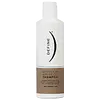What's inside
What's inside
 Key Ingredients
Key Ingredients

No key ingredients
 Benefits
Benefits

 Concerns
Concerns

 Ingredients Side-by-side
Ingredients Side-by-side

Water
Skin ConditioningSodium Laureth Sulfate
CleansingCocamidopropyl Betaine
CleansingSodium Chloride
MaskingGlycol Distearate
EmollientGlycerin
HumectantArgania Spinosa Kernel Oil
EmollientAcrylates Copolymer
Guar Hydroxypropyltrimonium Chloride
Skin ConditioningSodium Sulfate
Monosodium Citrate
BufferingCitric Acid
BufferingSodium Hydroxide
BufferingSodium Benzoate
MaskingParfum
MaskingCI 15985
Cosmetic ColorantCI 14700
Cosmetic ColorantCI 42051
Cosmetic ColorantWater, Sodium Laureth Sulfate, Cocamidopropyl Betaine, Sodium Chloride, Glycol Distearate, Glycerin, Argania Spinosa Kernel Oil, Acrylates Copolymer, Guar Hydroxypropyltrimonium Chloride, Sodium Sulfate, Monosodium Citrate, Citric Acid, Sodium Hydroxide, Sodium Benzoate, Parfum, CI 15985, CI 14700, CI 42051
Quartz
AbrasiveAloe Barbadensis Leaf Extract
EmollientCoco-Glucoside
CleansingSodium Coco-Sulfate
CleansingGlycerin
HumectantLauryl Glucoside
CleansingCitrus Aurantium Dulcis Peel Oil
MaskingCitrus Limon Peel Oil
MaskingHelianthus Annuus Seed Oil
EmollientHippophae Rhamnoides Fruit Extract
Skin ConditioningRosa Canina Fruit Extract
AstringentSucrose
HumectantSalix Purpurea Bark Extract
Skin ConditioningVaccinium Macrocarpon Fruit Extract
AstringentVaccinium Myrtillus Fruit Extract
Skin ConditioningAscorbyl Palmitate
AntioxidantBeta-Sitosterol
Emulsion StabilisingSodium Hyaluronate
HumectantCoco-Caprylate
EmollientSqualene
EmollientXanthan Gum
EmulsifyingGlyceryl Oleate
EmollientHydrogenated Palm Glycerides Citrate
EmollientLecithin
EmollientLysolecithin
EmulsifyingPolyglyceryl-4 Caprate
EmulsifyingSodium Chloride
MaskingTocopherol
AntioxidantLactic Acid
BufferingParfum
MaskingLimonene
PerfumingQuartz, Aloe Barbadensis Leaf Extract, Coco-Glucoside, Sodium Coco-Sulfate, Glycerin, Lauryl Glucoside, Citrus Aurantium Dulcis Peel Oil, Citrus Limon Peel Oil, Helianthus Annuus Seed Oil, Hippophae Rhamnoides Fruit Extract, Rosa Canina Fruit Extract, Sucrose, Salix Purpurea Bark Extract, Vaccinium Macrocarpon Fruit Extract, Vaccinium Myrtillus Fruit Extract, Ascorbyl Palmitate, Beta-Sitosterol, Sodium Hyaluronate, Coco-Caprylate, Squalene, Xanthan Gum, Glyceryl Oleate, Hydrogenated Palm Glycerides Citrate, Lecithin, Lysolecithin, Polyglyceryl-4 Caprate, Sodium Chloride, Tocopherol, Lactic Acid, Parfum, Limonene
Alternatives
Ingredients Explained
These ingredients are found in both products.
Ingredients higher up in an ingredient list are typically present in a larger amount.
Glycerin is already naturally found in your skin. It helps moisturize and protect your skin.
A study from 2016 found glycerin to be more effective as a humectant than AHAs and hyaluronic acid.
As a humectant, it helps the skin stay hydrated by pulling moisture to your skin. The low molecular weight of glycerin allows it to pull moisture into the deeper layers of your skin.
Hydrated skin improves your skin barrier; Your skin barrier helps protect against irritants and bacteria.
Glycerin has also been found to have antimicrobial and antiviral properties. Due to these properties, glycerin is often used in wound and burn treatments.
In cosmetics, glycerin is usually derived from plants such as soybean or palm. However, it can also be sourced from animals, such as tallow or animal fat.
This ingredient is organic, colorless, odorless, and non-toxic.
Glycerin is the name for this ingredient in American English. British English uses Glycerol/Glycerine.
Learn more about GlycerinParfum is a catch-all term for an ingredient or more that is used to give a scent to products.
Also called "fragrance", this ingredient can be a blend of hundreds of chemicals or plant oils. This means every product with "fragrance" or "parfum" in the ingredients list is a different mixture.
For instance, Habanolide is a proprietary trade name for a specific aroma chemical. When used as a fragrance ingredient in cosmetics, most aroma chemicals fall under the broad labeling category of “FRAGRANCE” or “PARFUM” according to EU and US regulations.
The term 'parfum' or 'fragrance' is not regulated in many countries. In many cases, it is up to the brand to define this term.
For instance, many brands choose to label themselves as "fragrance-free" because they are not using synthetic fragrances. However, their products may still contain ingredients such as essential oils that are considered a fragrance by INCI standards.
One example is Calendula flower extract. Calendula is an essential oil that still imparts a scent or 'fragrance'.
Depending on the blend, the ingredients in the mixture can cause allergies and sensitivities on the skin. Some ingredients that are known EU allergens include linalool and citronellol.
Parfum can also be used to mask or cover an unpleasant scent.
The bottom line is: not all fragrances/parfum/ingredients are created equally. If you are worried about fragrances, we recommend taking a closer look at an ingredient. And of course, we always recommend speaking with a professional.
Learn more about ParfumChances are, you eat sodium chloride every day. Sodium Chloride is also known as table salt.
This ingredient has many purposes in skincare: thickener, emulsifier, and exfoliator.
You'll most likely find this ingredient in cleansers where it is used to create a gel-like texture. As an emulsifier, it also prevents ingredients from separating.
There is much debate on whether this ingredient is comedogenic. The short answer - comedogenic ratings don't tell the whole story. Learn more about comegodenic ratings here.
The concensus about this ingredient causing acne seems to be divided. Research is needed to understand if this ingredient does cause acne.
Scrubs may use salt as the primary exfoliating ingredient.
Learn more about Sodium Chloride